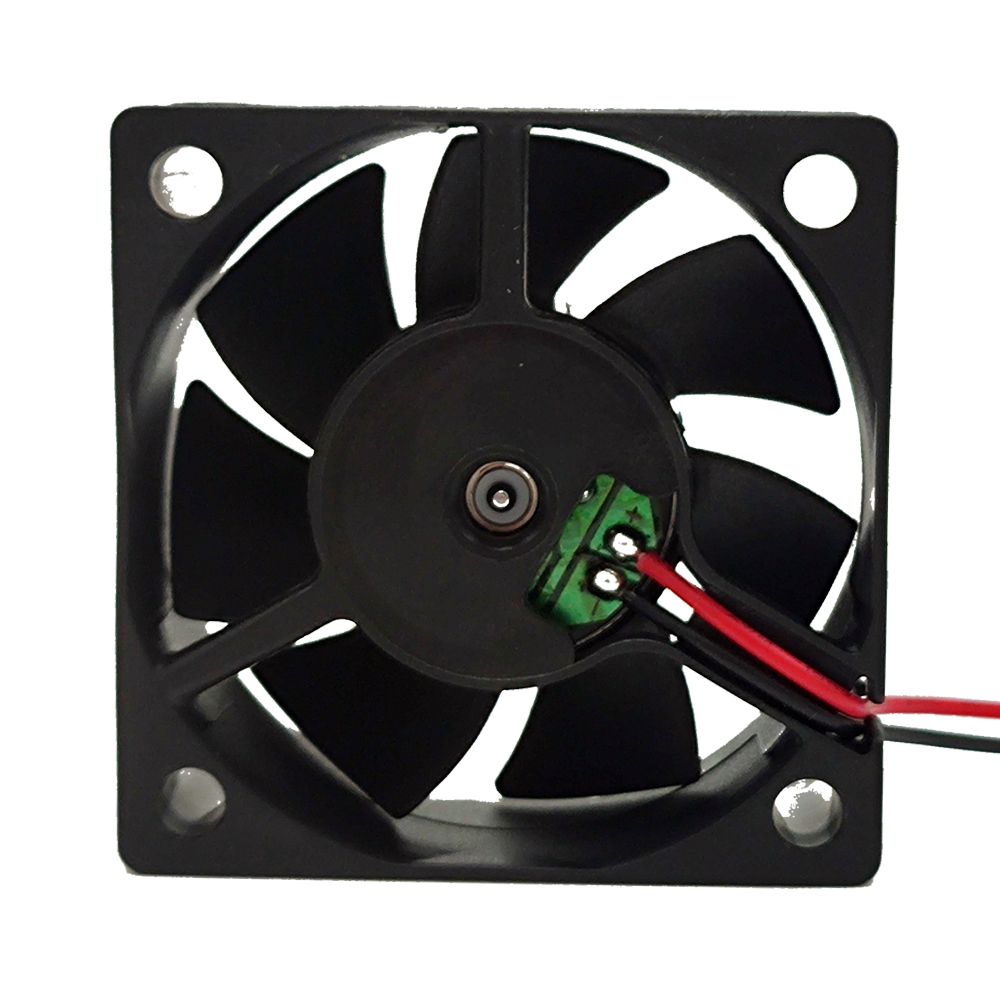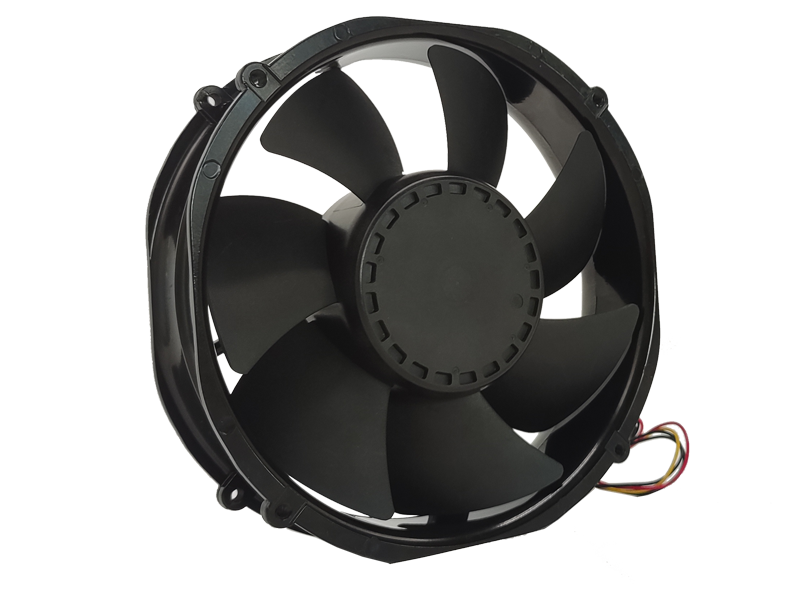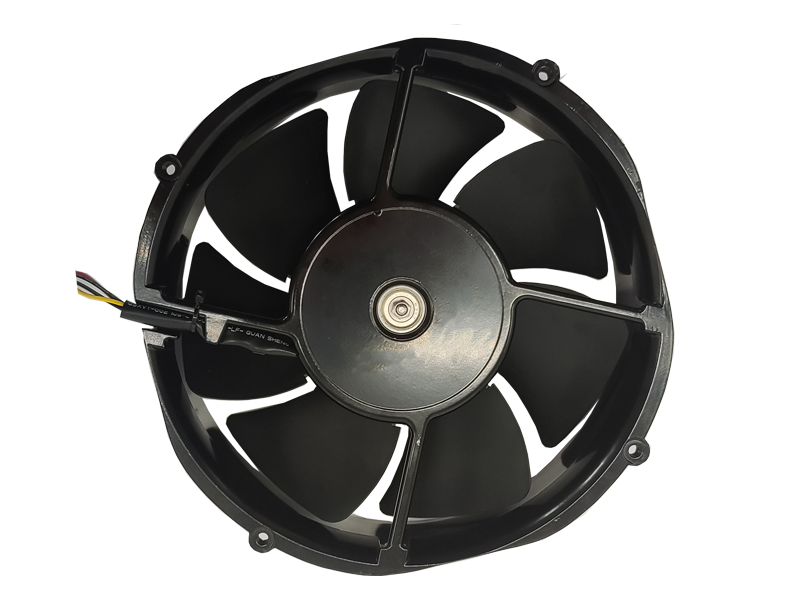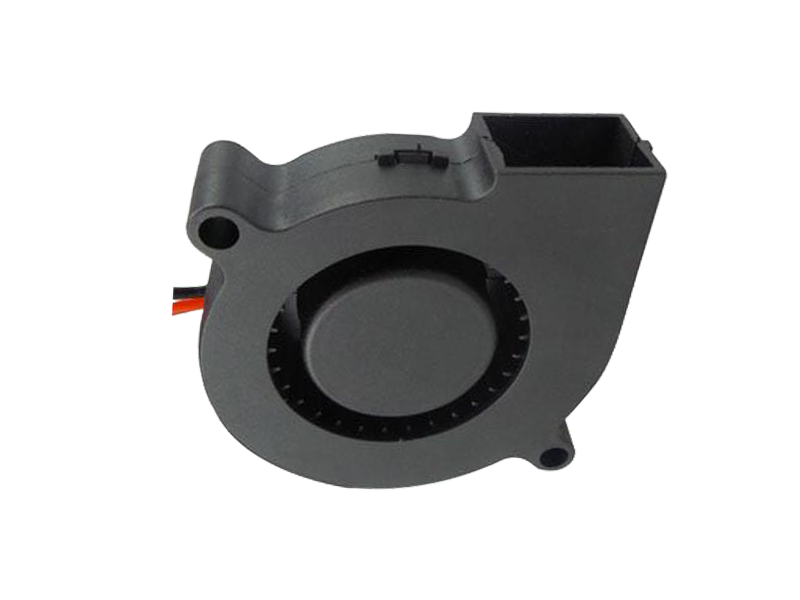Industrial fans play a crucial role in the success of many manufacturing and processing operations by providing efficient cooling, ventilation, and air circulation. These fans are engineered to meet the diverse and demanding conditions of industrial environments, ranging from high-temperature areas to spaces with hazardous conditions, all while delivering high performance and reliability. From heavy-duty operations in factories and warehouses to controlling air quality in large-scale facilities, industrial fans are indispensable tools that help businesses maintain safe, productive, and energy-efficient environments.
This article explores the design, application, and technological advancements in industrial fans, providing a comprehensive understanding of how they contribute to various industries.
1. The Primary Functions of Industrial Fans
Industrial fans are designed to move large volumes of air, either to cool down equipment, improve air circulation, or reduce the buildup of fumes, smoke, or hazardous particles. Unlike typical residential fans, industrial fans are built for durability, high performance, and longevity in challenging environments. Their main functions can be grouped into the following categories:
Cooling and Temperature Control: Many industrial processes generate substantial amounts of heat, especially in sectors like manufacturing, metal processing, and chemical plants. Industrial fans are deployed to help dissipate this heat, ensuring that machinery operates within optimal temperature ranges, preventing overheating and failure. For example, large blowers are used in cooling towers for power plants, while axial fans are used in heat exchangers for temperature regulation in factories.
Ventilation and Air Quality Control: Industrial environments often deal with poor air quality due to airborne contaminants, dust, fumes, or chemicals. Fans are essential for maintaining ventilation and ensuring that fresh air is circulated throughout the facility. For instance, fans in clean rooms or food processing plants help to maintain an environment free of dust and contaminants.
Dust and Fume Extraction: In industries like woodworking, mining, and chemical manufacturing, it is common to deal with hazardous dust, smoke, or fumes. Specialized fans, such as fume extractors, are used to capture these airborne particles and prevent them from spreading throughout the facility, safeguarding worker health and complying with environmental regulations.
2. Types of Industrial Fans
Industrial fans come in various types, each with specific characteristics tailored to different applications. The most commonly used industrial fan types are:
Axial Fans: These fans move air along the axis of the fan, creating a high-flow, low-pressure airflow. They are commonly used in applications that require moving large amounts of air over short distances, such as in ventilation systems or cooling towers. Axial fans are widely used in industrial plants and HVAC systems due to their efficiency and simplicity.
Centrifugal Fans: These fans generate airflow by using the centrifugal force that pushes air outward as it moves through the fan's blades. Centrifugal fans provide high pressure and are ideal for applications where air needs to be moved over longer distances or through ductwork, such as in air handling systems, dust collection, and industrial exhaust systems. They are also used in environments with high-resistance airflow paths, such as in drying and material handling systems.
Blowers: Blowers are essentially high-pressure fans that generate a focused, directed airflow. These fans are often used in applications that require precisely controlled airflow, such as in pneumatic conveying systems, combustion air supply, and cooling applications in heavy machinery.
Exhaust Fans: Exhaust fans are specifically designed to extract hot air, fumes, or hazardous gases from an enclosed space. These fans are essential in facilities that handle chemical processes, or in areas with high heat or moisture, such as kitchens, laboratories, or manufacturing areas.
3. Key Considerations in Industrial Fan Design
When designing industrial fans, manufacturers must take several factors into account to ensure the fans meet the required performance standards while maintaining reliability and efficiency. Some of the key considerations include:
Fan Efficiency: Energy efficiency is a critical factor in the design of industrial fans, as they often run continuously in demanding conditions. Fans that operate at high efficiencies reduce energy consumption and lower operational costs for businesses. Modern fan designs incorporate optimized blades, motors, and control systems to minimize energy usage while maximizing airflow.
Durability and Reliability: Industrial fans are typically used in harsh environments, subject to vibrations, high temperatures, and exposure to chemicals, dust, or moisture. The materials used in the construction of the fan, including the motor housing, blades, and bearings, must be robust enough to withstand these conditions. Corrosion-resistant materials like stainless steel are often used in manufacturing fans for such applications.
Noise Reduction: Noise is an inherent characteristic of most industrial fans, but excessive noise can lead to worker fatigue and contribute to hearing loss. To address this issue, modern industrial fans are designed with noise-reduction features, including vibration isolation mounts, quiet operation motors, and advanced blade designs that minimize turbulence and reduce sound.
Safety and Compliance: Industrial fans are subject to various safety and regulatory standards depending on their application. For instance, fans used in hazardous environments may need to meet explosion-proof or fire-resistant standards. Compliance with standards such as ATEX (for explosive atmospheres) or UL certifications ensures that the fans can operate safely in environments where there is a risk of fire or explosion.
4. Technological Advancements in Industrial Fans
Advances in technology have significantly impacted the design, performance, and efficiency of industrial fans in recent years. These innovations help businesses meet the evolving demands of industrial processes, improve operational efficiency, and reduce environmental impact.
Variable Speed Drives (VSD): The integration of variable speed drives (VSDs) in industrial fans has revolutionized their operation. VSDs allow the fan speed to be adjusted based on real-time environmental conditions, such as temperature or airflow. This enables precise control of airflow and reduces energy consumption, as the fan runs only at the speed necessary for the application. VSD technology also extends the lifespan of the fan motor by preventing overloading.
Advanced Fan Blades: New materials and aerodynamic designs have improved the efficiency and durability of fan blades. Composite materials, such as fiberglass and carbon fiber, are increasingly being used in fan blades to reduce weight and improve performance. Additionally, more sophisticated blade designs, such as backward-curved blades, enhance airflow efficiency while minimizing noise.
Smart Fans and IoT Integration: The Industrial Internet of Things (IIoT) is driving the next wave of innovation in industrial fan technology. Smart fans are equipped with sensors that monitor real-time performance, including temperature, airflow, and vibration. These sensors feed data back to centralized monitoring systems, allowing for predictive maintenance, performance optimization, and troubleshooting. IoT-enabled fans can be integrated into broader industrial control systems, providing businesses with more comprehensive control over their operations.
Eco-Friendly Materials: With growing environmental concerns, industrial fans are increasingly being designed with eco-friendly materials that are recyclable and require fewer resources to manufacture. Some manufacturers are also incorporating energy-efficient motors that minimize power consumption without sacrificing performance.
5. Applications of Industrial Fans
Industrial fans are essential in a wide variety of industries and applications. Here are some common use cases:

Manufacturing: In manufacturing facilities, fans are used for cooling processes, drying products, and maintaining air quality. For example, cooling fans in injection molding machines ensure that parts cool down at a controlled rate, preventing defects in the final product.
HVAC Systems: In large buildings, such as hospitals, schools, or commercial office complexes, industrial fans are used in HVAC (heating, ventilation, and air conditioning) systems to circulate air, provide fresh air to indoor spaces, and regulate indoor temperatures.
Mining and Oil & Gas: Industrial fans play a critical role in ventilation systems in mining operations, where they help remove toxic gases and provide fresh air to workers. In the oil and gas industry, fans are used to ensure air quality in drilling sites and refineries.
Food and Beverage: In food processing plants, fans help maintain sanitary conditions by controlling air circulation and humidity levels. They are also used in cooling and drying processes, such as drying herbs or cooling hot foods.
Data Centers: Data centers require precise temperature control to prevent overheating of servers. Industrial fans are used to maintain airflow within these environments, ensuring that sensitive electronics remain at optimal temperatures.
6. Conclusion
Industrial fans are integral to the smooth operation of various industries, helping to maintain efficient cooling, ventilation, and air circulation in demanding environments. With advancements in fan technology, including energy-efficient designs, smart controls, and improved durability, industrial fans are becoming even more critical in ensuring operational efficiency, energy savings, and workplace safety.
The future of industrial fans is heading towards smarter, more adaptable solutions that can respond dynamically to changes in environmental conditions. As industries continue to evolve, so too will the fans that power them, helping businesses improve productivity and meet sustainability goals.
Recommended Products

The main purpose:Car charging station

The main purpose:Car charging station

The main purpose:Electronic refrigerators, water dispensers, direct drinking machines, inverter power supplies
Address:No. 4137, Longgang Avenue (Henggang Section), Henggang Community, Henggang Street, Longgang District, Shenzhen
hotline:13530005572(Chen)15112579390(Li)


Welcome all friends to come for consultation and negotiation.
Copyright 2024 @ Shenzhen Youneng Xinyuan Electronics Co., Ltd.,(industrial fans,industrial blowers,axial fans,cooling fans manufacturer,centrifugal fans,ac cooling fans,dc cooling fans)